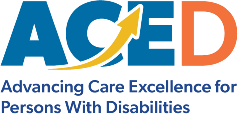Oral Health and Stroke Rehabilitation
Poor oral care after a stroke can have serious physical, psychological, and social consequences and adversely affect quality of life. Up to 78 percent of stroke patients have dysphagia and loss of sensation, which can cause stasis of saliva and collection of food in the oral cavity. This provides an environment that increases risk for oral infection and tooth decay. Up to 75 percent of patients may be unable to brush their teeth or maintain their oral health due to impaired cognitive and physical abilities.
Stroke significantly impacts a person’s ability to maintain self-care and increases reliance on others to support activities of daily living, including oral hygiene. Normal daily activities that affect oral hygiene such as eating, drinking, and tooth brushing can be severely disrupted. Motor dysfunction, a typical feature of stroke, can contribute to dysphagia, which increases risk for aspiration of food and development of pneumonia, which can be fatal.
While good oral hygiene is critical to health and quality of life following stroke, stroke-related impairments, including fatigue, apraxia, and unilateral weakness, can severely restrict survivors’ ability to regularly carry out adequate oral hygiene activities. Oral care requires multiple self-care skills that stroke survivors may struggle with on a long-term basis. Thus, they may experience deterioration in their oral health. A pregnant patient who is post-stroke has the added risks of pregnancy and residual stroke deficits that increase risk for oral health problems. Caregivers are often not prepared to assist with oral care and need coaching on oral hygiene techniques.
Oral Health and Stroke Rehabilitation
Download all files for this teaching strategy
Learning Objectives
Students will:
- Describe oral health needs of patient with stroke.
- Demonstrate three technologies to assist patient with stroke in oral care.
- Describe oral health needs of pregnant patient who is post-stroke.
- Demonstrate two oral health interventions for pregnant patient who is post-stroke.
- Demonstrate strategies for infant oral hygiene anticipatory guidance.
Learner Prework
The following readings and online courses provide background information on oral health in patients with stroke.
Reading:
- Gurgel-Juarez, N., Egan, M., Wiseman, M., Finestone, H., & Flowers, H.L. (2020). Technology for maintaining oral care after stroke: Considerations for patient-centered practice. Disability and Rehabilitation: Assistive Technology. doi: 10.1080/17483107.2020.1822450
Online courses:
- Smiles for Life: Pregnancy and Women’s Oral Health https://www.smilesforlifeoralhealth.org/courses/pregnancy-and-women/
This course addresses the importance of oral health before, during, and after pregnancy.
- Smiles for Life: Child Oral Health https://www.smilesforlifeoralhealth.org/courses/child-oral-health/
This course addresses the importance of prevention of early childhood caries.
Suggested Learning Activities
- Using the Oral Health and Stroke Rehabilitation Activity document, have students demonstrate one technology for post-stroke rehabilitation from the table.
- Review guidelines in Oral Health During Pregnancy: A National Consensus Statement https://www.mchoralhealth.org/PDFs/OralHealthPregnancyConsensus.pdf
- Have students demonstrate taking an oral health history of a pregnant patient who is post-stroke with residual paralysis of the left upper extremity.
- Ask students to demonstrate giving oral health guidance to a pregnant patient who is post-stroke with residual paralysis of the left upper extremity.
- Review guidelines from Smiles for Life: Child Oral Health https://www.smilesforlifeoralhealth.org/courses/child-oral-health/
- Ask students to demonstrate oral health anticipatory guidance for infants of mothers who are post-stroke.
Suggested Reading
Gurgel-Juarez, N., Egan, M., Wiseman, M., Finestone, H., & Flowers, H.L. (2020). Technology for maintaining oral care after stroke: Considerations for patient-centered practice. Disability and Rehabiitation: Assistive Technology. doi: 10.1080/17483107.2020.1822450
Haber, J., & Hartnett, E. (2019). The interprofessional role in dental caries management: Impact of the nursing profession in early childhood caries. Dental Clinics, 63(4), 653-661. doi: 10.1016/j.cden.2019.05.002
Haber, J., Hartnett, E., Hille, A., & Cipollina, J. (2020). Promoting oral health for mothers and children: A nurse home visitor education program. Pediatric Nursing, 46(2), 70-76.
Hartnett, E., Haber, J., Krainovich-Miller, B., Bella, A., Vasilyeva, A., & Kessler, J. L. (2016). Oral health in pregnancy. Journal of Obstetric, Gynecologic & Neonatal Nursing, 45(4), 565-573. doi: 10.1016/j.jogn.2016.04.005
Lyons, M., Smith. C., Boaden. E., et al. (2018). Oral care after stroke: Where are we now? European Stroke Journal, 3(4), 347-354. doi: 10.1177/2396987318775206
Author Information
Erin Hartnett, DNP, PPCNP-BC, CPNP, FAAN
Former Program Director
Oral Health Nursing Education and Practice (OHNEP)
NYU Rory Meyers College of Nursing
Judith Haber, PhD, APRN, FAAN
The Ursula Springer Leadership Professor in Nursing
Executive Director, Oral Health Nursing Education and Practice (OHNEP)
NYU Rory Meyers College of Nursing
Jessamin Elizabeth Cipollina, MA
Program Manager
Oral Health Nursing Education and Practice (OHNEP)
NYU Rory Meyers College of Nursing


